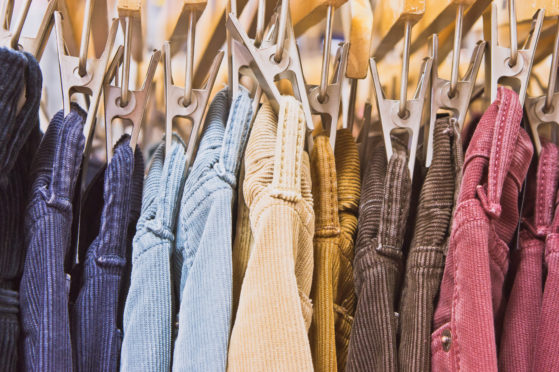I don’t want to strike a controversial note, nor yet to be “cancelled” for saying something politically incorrect. But a journalist must have the courage of his convictions and be prepared to stand against the mob.
So, proudly and with a quavering lip, I say this: there is nothing more comfortable than a pair of corduroy trousers. I see a woman at the back there has fainted, and I feel a groundswell of fury welling up in the audience from those who favour flannel.
But there’s no taking back the words now. You’ll probably find them in the Oxford Book of Top Quotations a few years from now. People will say: “Rab McNeil? Isn’t that the chap who favoured corduroy trousers?”
I should clarify some details regarding my controversial stance. Firstly, as you’d expect from a man of my standing, I prefer needlecord to jumbo. No offence, but jumbo is for older people with big bahookies.
These also tend to be the baggier type of cord. Trouser styles are a minefield now. Sometimes, you buy a pair of “straight” trousers in good faith, not noticing the style has been further branded as “slim” or, even worse, “skinny”.
And you end up, not being young yourself any more, wearing daft breeks that bunch up the knees and choke your ankles. The only trouser style I want is “normal”, but it’s hard to find these now.
Another qualification is that the cords should be black. There’s a reason for this: they must go with sandy-coloured desert boots. It’s the perfect combination. It’s the ensemble of my youth, basically a kind of cowboy look that marks out the man of independent legs.
In a way, I suppose it’s surprising you can away with wearing the same troosers as you did in your heyday decades ago. It would be like wearing spats or plus-fours in the 1960s. Nobody did that.
But I’ve yet to see an eyelid bat at my historic ensemble. Perhaps that’s because it’s “classic”. It hasn’t aged. And there’s nothing showy or peculiar about it.
I should add that it’s important that you can get your hands, lunchbox, binoculars and folding chair into the pockets. Nothing worse than strides so tight you have to leave your hands dangling outside.
Hands in pockets is snug, which brings me back to my main point: that corduroy trousers are just so soft and cosy. When you think about it – and I often do; I’m a trousers philosopher – most trousers have just a single layer of cloth, usually quite thin, offering little protection against the elephants. Sorry, elements.
But cords have a layer with fluffy cordy bits on top. It’s like wearing two pairs of trousers. The material is softer than denim, too, and not so stark as chino cotton or wool-polyester suit trousers.
The oldest known pair of trousers date from 3,000 years ago in yonder China, and seemingly were developed for horse-riding.
Although I’ve always wanted to be a cowboy, I wouldn’t like the horse-riding part and, down on the ranch, would probably prefer a more administrative role.
Still, at least I would look the part, standing there with my hands in my pockets, whistling a jaunty tune as I waited for my Heinz baked beans to cook on the camp-fire. Marvellous.











